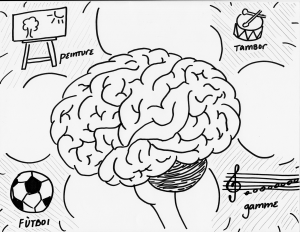 How much foreign language did you learn in elementary school? Unless you were committed to an after-school program, the answer is probably not much. After all, beyond the smattering of elementary schools offering a partial-immersion program, young FCPS students’ only in-class opportunity for foreign language acquisition consists of just two half-hour sessions per week.
How much foreign language did you learn in elementary school? Unless you were committed to an after-school program, the answer is probably not much. After all, beyond the smattering of elementary schools offering a partial-immersion program, young FCPS students’ only in-class opportunity for foreign language acquisition consists of just two half-hour sessions per week.
These facts are inconsistent with the county’s stated academic goals, which include that “students will be able to communicate in at least two languages.” But specials—classes like art, music and PE—are extremely valuable to elementary students.
Fortunately, there’s a simple solution to this dilemma: teach art, music and PE in foreign languages.
Although it might sound strange, it’s a great way to begin learning a language. Specials are very hands-on, making them ideal for gesturing and visual prompts. It’s one thing to learn the words for “bat” or “drum” while sitting at a desk; it’s another to physically experience new vocabulary.
Spending a few hours a week learning specialized vocabulary isn’t going to make anyone fluent in another language, but providing even a little exposure will be immensely valuable when year-long language classes become available.
Additionally, learning languages helps the brain: a recent study by Brian Gold, a neuroscientist at the University of Kentucky College of Medicine, showed that bilingual seniors are better than monolingual seniors at tasks requiring attention-switching, a skill that usually fades with age.
Even with its worsening budget woes, FCPS is responsible for fulfilling its promise to teach students foreign languages. Doing so during specials would be extremely valuable to students.
